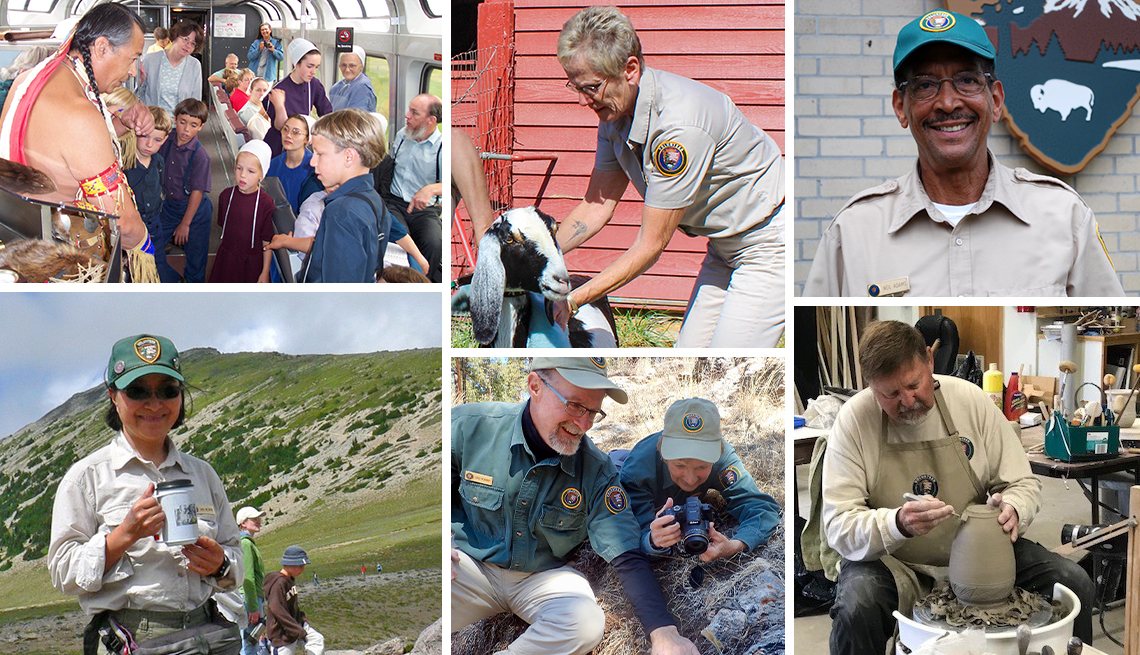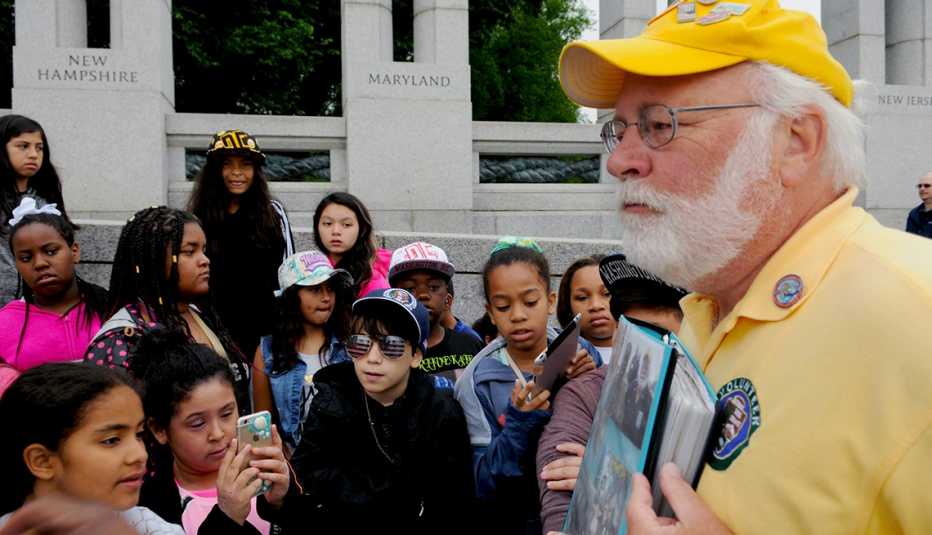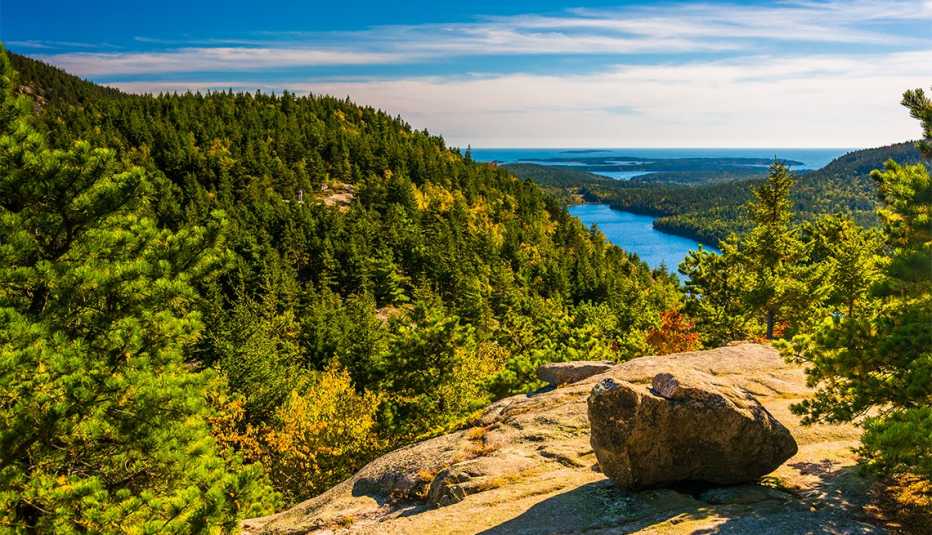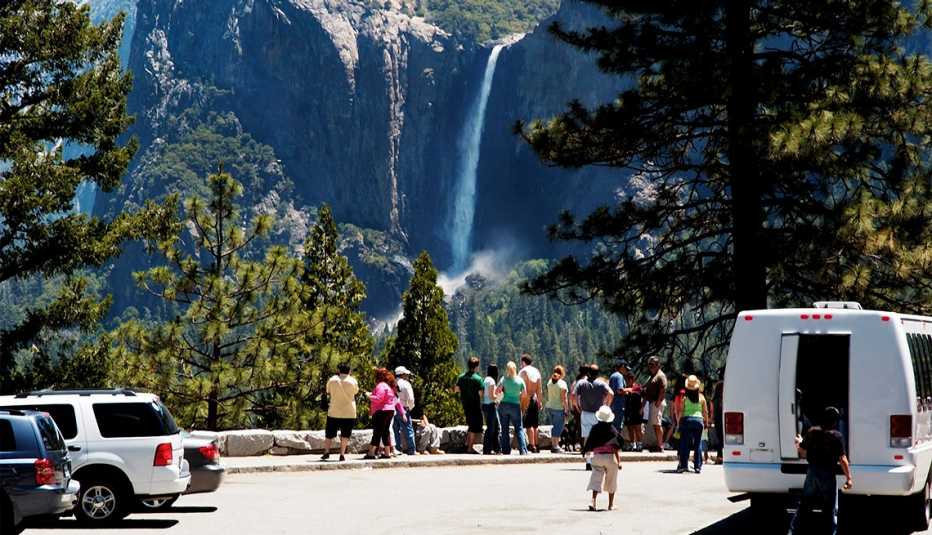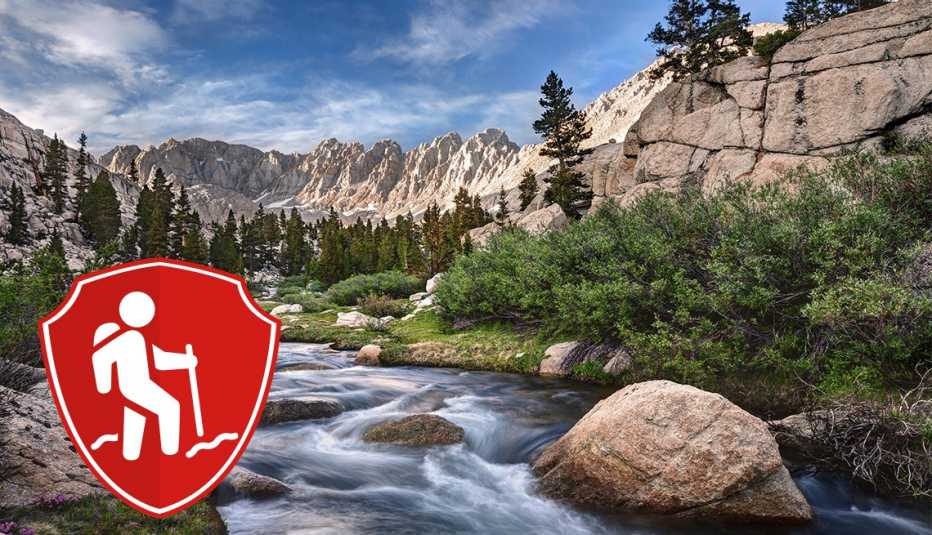Staying Fit
More than a decade ago, Sue Kaufmann took a career sabbatical to pursue her interest in storytelling and signed on as a volunteer interpreter near her home in Cranford, New Jersey, at the Thomas Edison National Historical Park, the inventor’s home and laboratory, and at Ellis Island, part of the Statue of Liberty National Monument.


AARP Membership— $12 for your first year when you sign up for Automatic Renewal
Get instant access to members-only products and hundreds of discounts, a free second membership, and a subscription to AARP the Magazine.
“I always wanted to be a park ranger,” says the 57-year-old, who used the experiences to transition to a new career with a heritage tourism nonprofit. “I wanted that flat hat.”
She’s not alone. In an average year, nearly 300,000 volunteers staff the National Park Service, donating 6.5 million hours of service valued at more than $185 million. Full-time employees, by comparison, number nearly 20,000.
“Volunteers are an incredibly important part of helping us fulfill our mission,” says Shari Orr, the NPS’s servicewide Volunteers-in-Parks program manager.
Volunteering opportunities span a broad range of skill levels, interests and time commitments. Over a few hours, volunteers may remove invasive species or pick up trash. With some training, reenactors in period clothing demonstrate blacksmithing and 19th-century gardening. Seasonal rangers may commit to several months manning visitor centers, guiding hikes or giving interpretive talks.
The park service also engages those with specialized skills as volunteer museum curators, librarians, historians, archaeologists and even scuba divers.
“One of the coolest things I have seen is people who utilize skills and experiences gained through a lifetime of work and choose to dedicate that in a new way or explore a new field,” Orr says.
While the NPS recruits volunteers across the age spectrum, seniors are the workhorses of the volunteer corps.
“Seniors are experienced and full of wisdom, and their hearts are open to sharing this wisdom and helping others to discover the wonders of national parks, nature and the star-filled universe,” says Matt Johnson, volunteer coordinator at Curecanti National Recreation Area near Gunnison, Colorado, who has been supervising volunteers for the past 20 years in parks including Yellowstone National Park.



























































